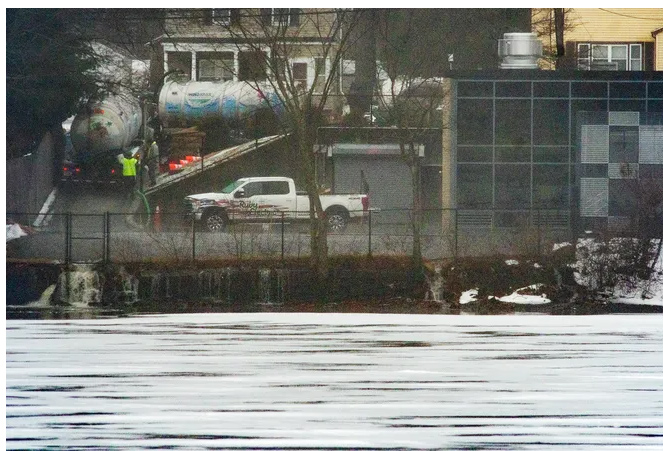In February, a malfunction at a pumping station spewed 6 million gallons of sewage into Lake Quinsigamond. Now, Worcester will spend millions to fix the problem.
Telegram & Gazette
Media credit and link to story:
WORCESTER —The city will spend an estimated $6 million to upgrade a pumping station at Lake Quinsigamond after a malfunction in February sent nearly 6 million gallons of raw sewage into the lake.
Calling the February incident a “catastrophic failure,” Philip Guerin, the city’s director of water and sewer operations, said engineering consultant Stantec has not determined what caused the malfunction.
But Stantec will test a new valve on one of the four pumps inside the station. If everything works out, all four pumps will get the valve. The existing valve installed in 2015 when the city spent $10 million to upgrade the station has not performed to expectations, Guerin said.
Valve performance is critical to pump sewage up to the top of Belmont Hill, where it’s piped underground to the Upper Blackstone sewage treatment plant on Route 20 in Millbury. If the valves don’t work, sewage can flow back into the station, cause flooding and shut down operations.
Stantec is also looking at the possibility of modifying pumps and motors inside the station.
Worcester will also spend $550,000 to replace four rented backup pumps placed outside the station after the February malfunction. The permanent replacements should be installed next month, said Guerin.
$13,000 fine
After the February incident, the state Department of Environmental Protection slapped a $13,000 fine on Worcester and required the city upgrade the station.
Besides the valve study and a close look at how pumps and motors are functioning, Worcester upgraded its alert system. An email blast will go out to roughly 300 city subscribers, said Guerin, to more quickly and efficiently notify residents when issues occur. That compares to phone calls made in February.
History of malfunctions
The pump station at 83 Lake Ave. has a history of malfunctions.
Hundreds of thousands of gallons of raw sewage poured into Lake Quinsigamond in 2017 after the 2015 upgrade. A leak in a hydraulic unit was the culprit, said Guerin.
There were also a couple of what Guerin called “smaller episodes” during upgrade construction. That project was needed, Guerin said, because the station historically didn’t have the capacity to handle wastewater overflow during heavy rainstorms.
Today, that’s not a problem because the station can pump up to 20 million gallons of sewage daily.
Problems persist
However, since the upgrade, mechanical problems persist. That is what happened in February when one of the four pumps flooded the facility, causing an electrical failure of the other pumps, releasing untreated sewage into the lake. The incident was a violation of the state Clean Water Act.
A health advisory lasted for two weeks, when residents were advised not to use the lake for recreational activities such as ice fishing near the pumping station.
Even after the upgrade, leaks and breaks happen more often than expected, said Guerin. Some mechanical parts that should last 25 years exhibited problems within five years.
Stantec spent the past 10 months to determine why the problems are happening but hasn’t found a smoking gun. So the strategy is to test the new valve, fully assess the entire operation and prevent future raw sewage leaks into Lake Quinsigamond.
“(Stantec) hasn’t identified anything definitively,” said Guerin. “It’s hard to explain why (the pump station) has done what it has done.”
Contact Henry Schwan at henry.schwan@telegram.com. Follow him on Twitter @henrytelegram



About the author